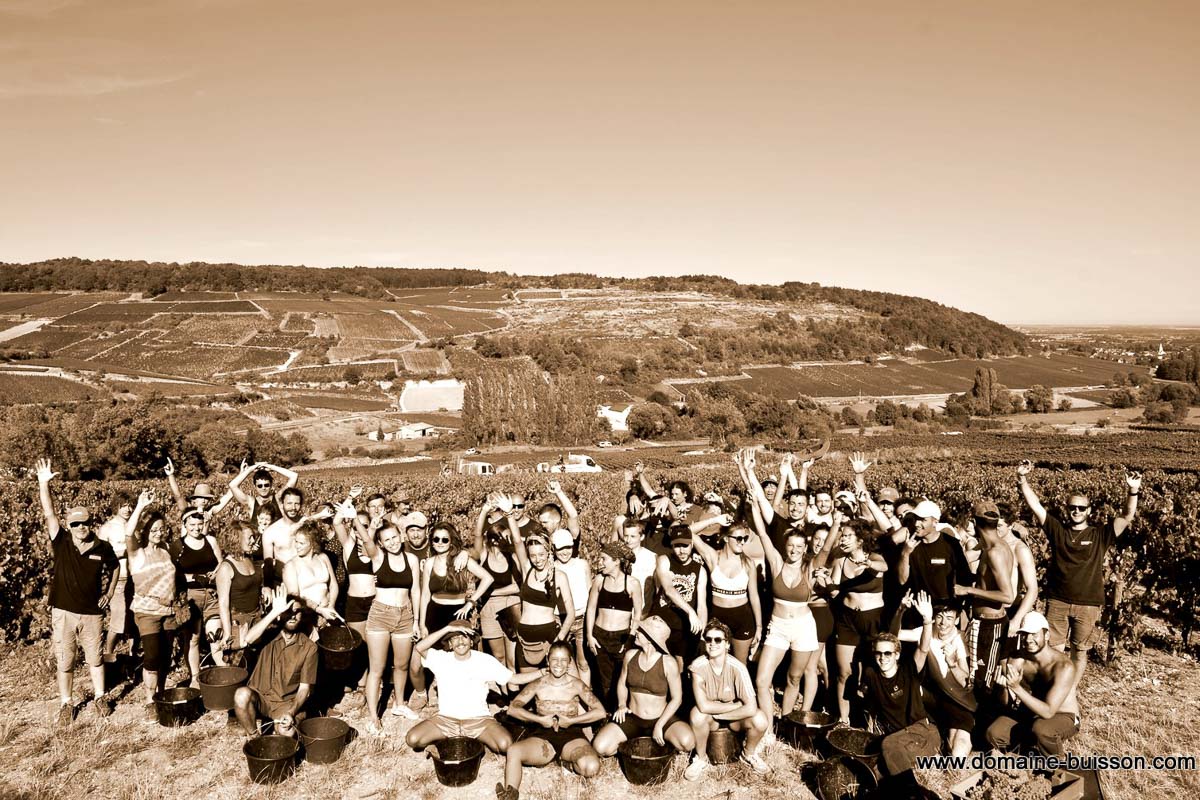
Présentation du domaine Henri & Gilles Buisson
Presentation of the domaine Henri & Gilles Buisson
DISCOVER THE WINES OF DOMAINE HENRI & GILLES BUISSON
-
Domaine Henri & Gilles Buisson : The essentials
- The origins of the family domain date back to 1758.
- The Henri & Gilles Buisson domain was founded in 1947
- Frédérick and Franck are the 8th generation of winegrowers in the family
- 20 hectares of vines located in the prestigious communes of Saint-Romaine, Meursault, Pommard, Volnay, ...
- 50% white and 50% red
- 1 regional white appellation
- 7 white village appellations
- 1 white Grand Cru appellation
- 1 regional red appellation
- 6 village red appellations
- 2 appellations 1er cru rouge
- 2 red Grand Cru appellations
- Certified organic since 2009 and biodynamic since 2018
- Yields are controlled to bring out the best in the terroir.
- Whole crop for the whites and partially destemmed for the reds, depending on the vintage. Between 20% and 60% whole grapes.
- Aged in 228-litre oak barrels for the reds and 228, 350 and 500-litre barrels for the whites.
- Aged for a minimum of 12 months. Approximately 10-15% new barrels
-
History of the domain / family
Domaine Henri & Gilles Buisson is deeply rooted in the winegrowing history of Saint-Romain, a charming Burgundy village renowned for its wines from the very beginning. The Buisson family has been growing vines here since 1758, making their mark on the wine world with each generation.
The modern history of the domain really began in 1947 with Henri Buisson, a passionate visionary. That year, just as Saint-Romain was obtaining its appellation d'origine contrôlée (AOC), Henri planted 5 hectares of vines, laying the foundations for the family domain. A pioneer at heart, he committed himself to independent production, in line with the first organic movements of the time, in the 60s and 70s.
Gilles Buisson, Henri's son, and his wife Monica took over the reins of the domain with an ambitious vision. Under their leadership, the vineyard grew to 14 hectares in 2000. They invested in a new winery and modern winemaking equipment, cementing the domain's reputation for quality and innovation. Thanks to their hard work, they were able to create a high-performance estate that they were able to pass on to their children.
Since 2008, Franck and Frédérick Buisson, Henri's grandsons, have been carrying on the family legacy with an undiminished passion for the terroir and the wines of Saint-Romain. Respectful of the land and its traditions, they have steered the domain towards sustainable and responsible viticulture. In 2009, the vineyard was awarded organic certification, and in 2018, they fully adopted biodynamic practices for almost 20 hectares by becoming Biodyvin-certified.
Franck and Frédérick Buisson place innovation at the heart of their concerns, while respecting the natural rhythm of nature. Their commitment to biodynamic and organic practices is testament to their desire to produce authentic wines that respect the environment. In this way, Domaine Henri & Gilles Buisson continues to be part of a dynamic of progress, while honouring the heritage of their ancestors.
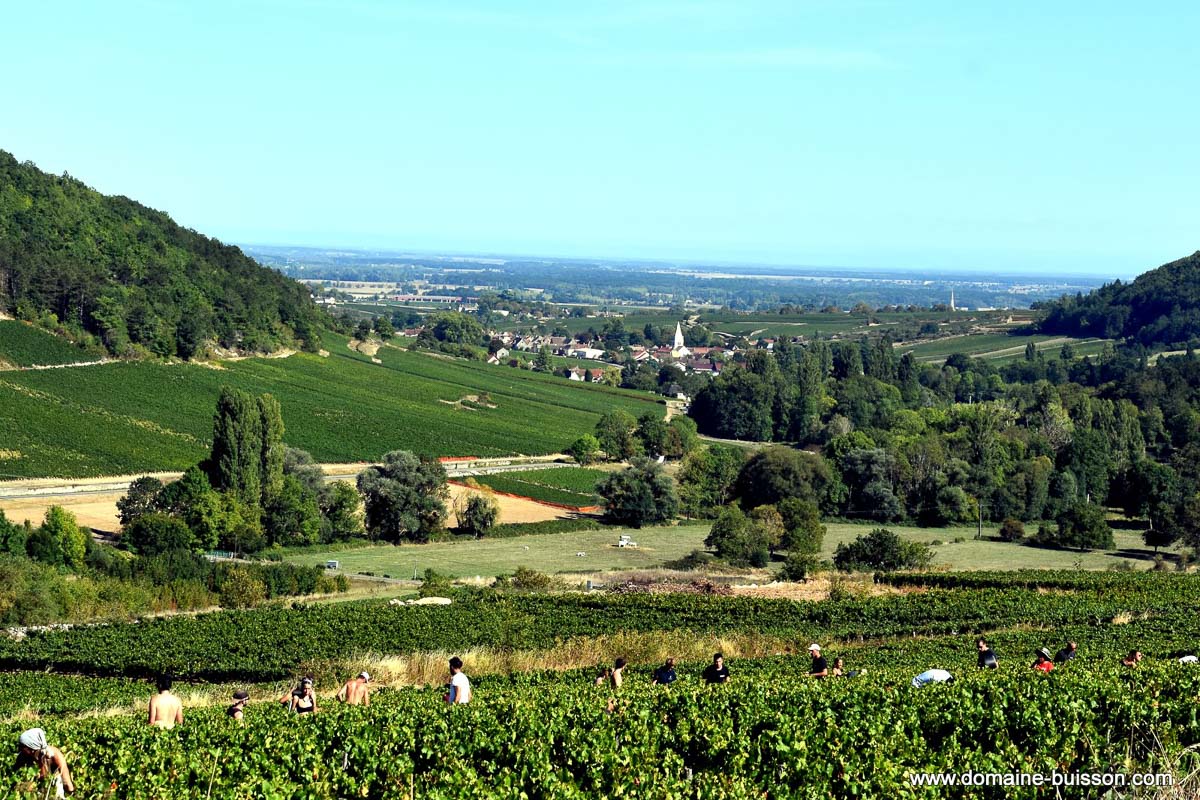
-
Philosophy of the domain
Domaine Henri & Gilles Buisson is distinguished by a philosophy deeply rooted in respect for nature and the preservation of the terroir. Franck and Frédérick Buisson, heirs to this family tradition, have placed eco-responsibility and authenticity at the heart of their approach to winemaking.
The two brothers are firmly committed to protecting the ecosystem. Their eco-responsible approach includes monitoring their carbon footprint and adopting innovative, environmentally-friendly practices. They think and act holistically, integrating sustainable methods into every stage of their production. This includes careful selection of corks, bottles and materials to minimise environmental impact. This attention to detail is testament to their desire to create a greener future for winemaking.
The Buisson brothers are also determined to preserve the uniqueness and originality of each climate. They adopt a minimalist approach, accompanying each terroir so that it reveals a wine that resembles it. This philosophy of non-excessive intervention helps to maintain the specificity of each parcel, resulting in authentic and distinctive wines. Their approach highlights the diversity of Burgundy's terroirs, where each wine tells the story of its origin.
Vinification at Domaine Henri & Gilles Buisson is a meticulous process, where each wine is tasted daily for personalised monitoring. This constant attention creates a veritable mosaic of flavours across their different appellations. Each wine is a faithful reflection of the climate from which it comes, capturing the very essence of the Burgundy terroir. Franck and Frédérick are proud to produce wines that they love, wines that tell the story of their terroir and appeal to a variety of palates around the world.
Today, the Domaine exports its wines to some twenty countries, sharing the richness of Burgundy's climates with wine lovers in every corner of the globe. Their commitment to quality and authenticity has helped them build an international reputation, and they continue to promote their terroir far beyond France's borders.
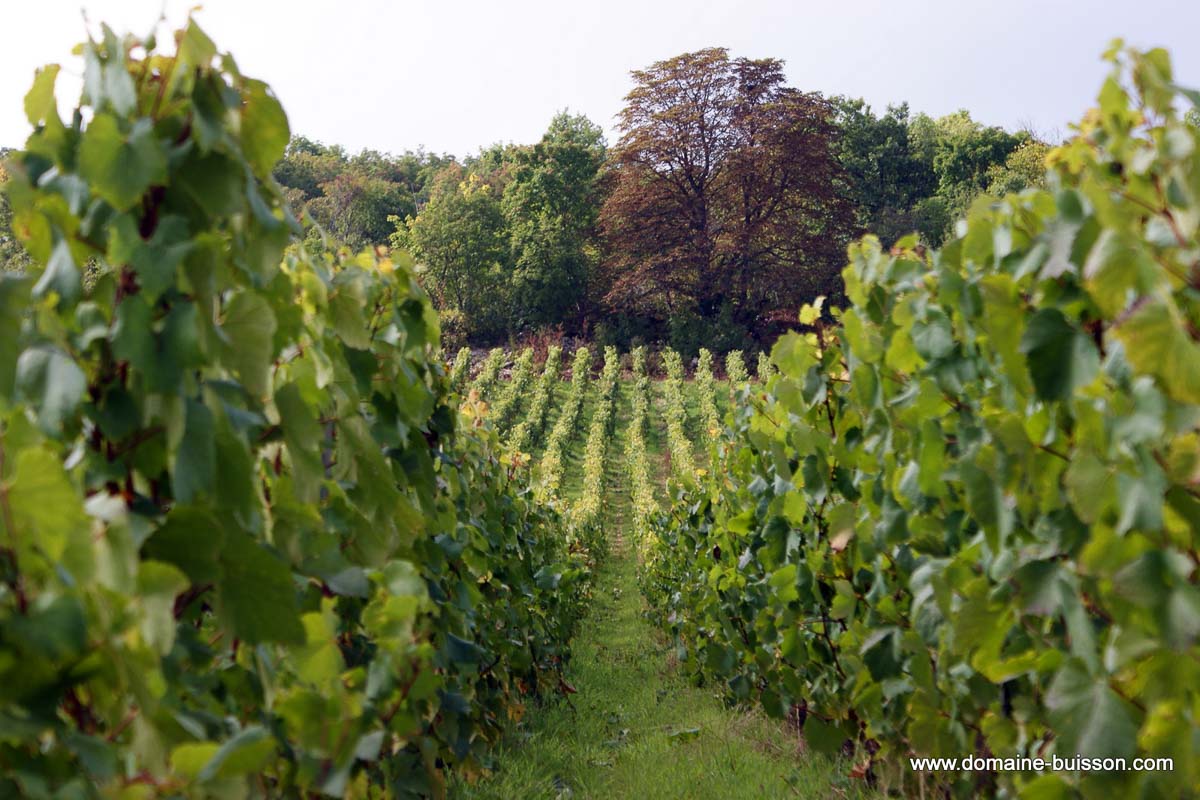
-
Vineyard management at Domaine Henri & Gilles Buisson
Soil management
Soil management is an essential component of the sustainable viticulture practised at Domaine Henri & Gilles Buisson. Franck and Frédérick are committed to preserving the health of the soil while encouraging a rich and varied biodiversity. Their approach combines traditional methods with innovative techniques, ensuring the production of high-quality wines while respecting the environment.
The estate's vines are naturally grassed for 10 months of the year. This practice protects the soil, encourages biodiversity and limits erosion. The soil is only worked for two months, from mid-April to the end of June, during the vegetative growth period. During this period, work is kept to a minimum in order to preserve the structure of the soil.
To avoid soil compaction, tractor passes are kept to a strict minimum. Ploughing is limited to 3 or 4 times a year, depending on weather conditions. Mechanical work is carried out superficially, with shallow scratching at a depth of between 2 and 4 centimetres. This technique keeps the soil porous and encourages biological activity.
One of the key elements of soil management at Domaine Henri & Gilles Buisson is the use of green manure cover crops. These cover crops, made up of rye, mustard, clover and other plants, are sown to add organic matter, decompact the soil and enrich biodiversity. Green manures play a crucial role in improving soil structure and providing essential nutrients for the vines.
Frédérick Buisson carries out regular soil analyses to identify any deficiencies and adjust the plant cover accordingly. These analyses enable precise, tailored management, ensuring that each plot receives the care it needs to optimise soil health and grape quality.
The Buisson family's eco-responsible approach goes beyond traditional viticultural practices. Their commitment is reflected in constant efforts to reduce environmental impact, preserve biodiversity and improve soil health. This careful, sustainable soil management contributes not only to the exceptional quality of the wines produced, but also to preserving the environment for future generations.
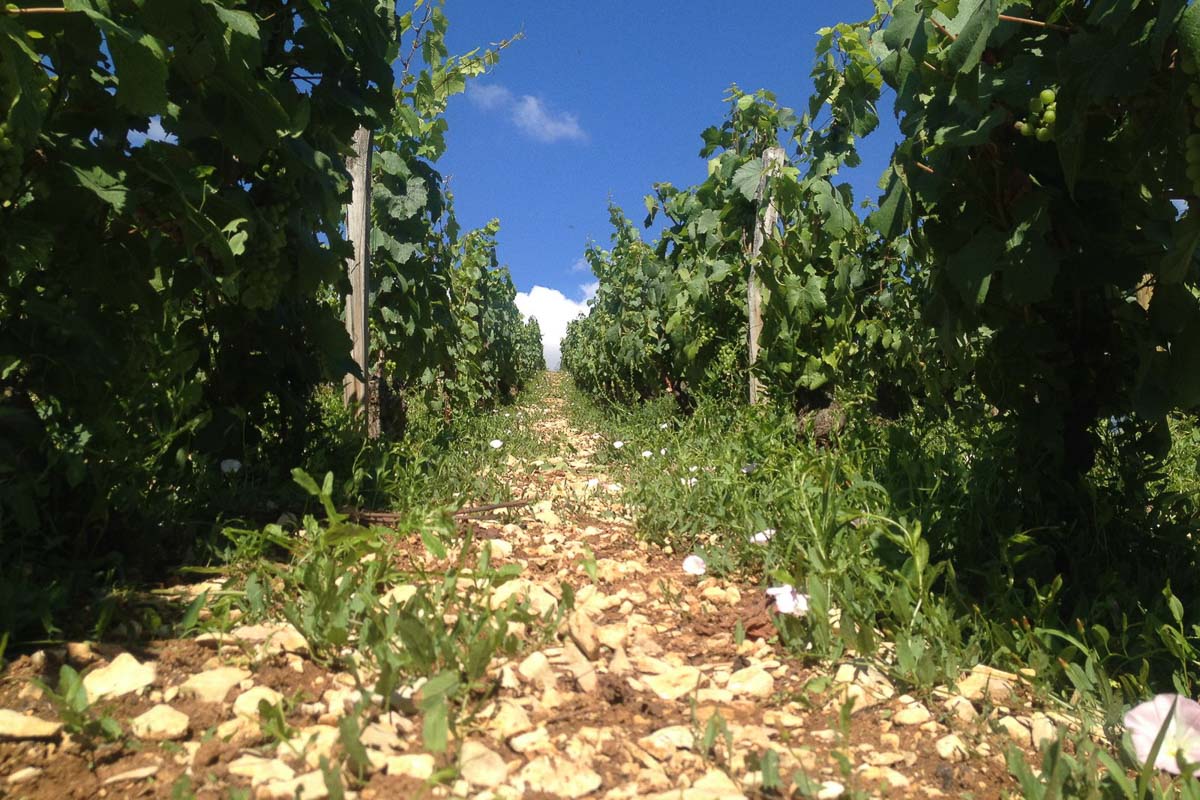
Pruning the vines
Managing vine pruning is an essential viticultural practice that directly influences the quality of the grapes and, consequently, the wines produced. At Domaine Henri & Gilles Buisson, Franck and Frédérick Buisson adopt precise, carefully considered pruning methods to respect the flow of sap and optimise the health and productivity of the vines.
The vines at Domaine Henri & Gilles Buisson are pruned using the simple Guyot method. This traditional technique regulates vine growth while respecting the natural flow of sap. By eliminating unnecessary shoots, Guyot simple pruning encourages a balanced distribution of nutrients, which contributes to the production of high-quality grapes. This method is particularly well suited to Burgundy grape varieties, helping to maintain the balance between the foliage and the grape bunches.
The vines are generally pruned to a standard height of 1.40 metres. This standard pruning makes it possible to control the vigour of the vines and facilitate the work in the vineyard throughout the year. However, Frédérick Buisson is always on the lookout for innovations to adapt to climate change, and is experimenting with new methods on certain plots.
On part of the ‘En Poillange’ plots, Frédérick is testing an innovative technique of trellising one row of vines in two at a height of 1.80 metres. This approach allows the vines to develop a plant canopy, creating a natural protection against the sun and high summer temperatures. By increasing the number of leaves, this technique also improves photosynthesis, making the plants more vigorous and resistant. The aim of these trials is to find sustainable solutions to the challenges posed by global warming.
Pruning management at Domaine Henri & Gilles Buisson has a direct impact on grape quality. By balancing the load of bunches and leaves, simple Guyot pruning and experiments with high trellising help to produce grapes with an optimum concentration of sugars and aromas. These practices help to produce authentic wines that faithfully reflect the Burgundy terroir.
Franck and Frédérick Buisson's approach to pruning the vines is part of an eco-responsible approach. By adopting methods that respect the plant and its environment, they promote sustainable viticulture. Their commitment to biodiversity and reducing environmental impact is reflected in their innovative and carefully thought-out viticultural practices.
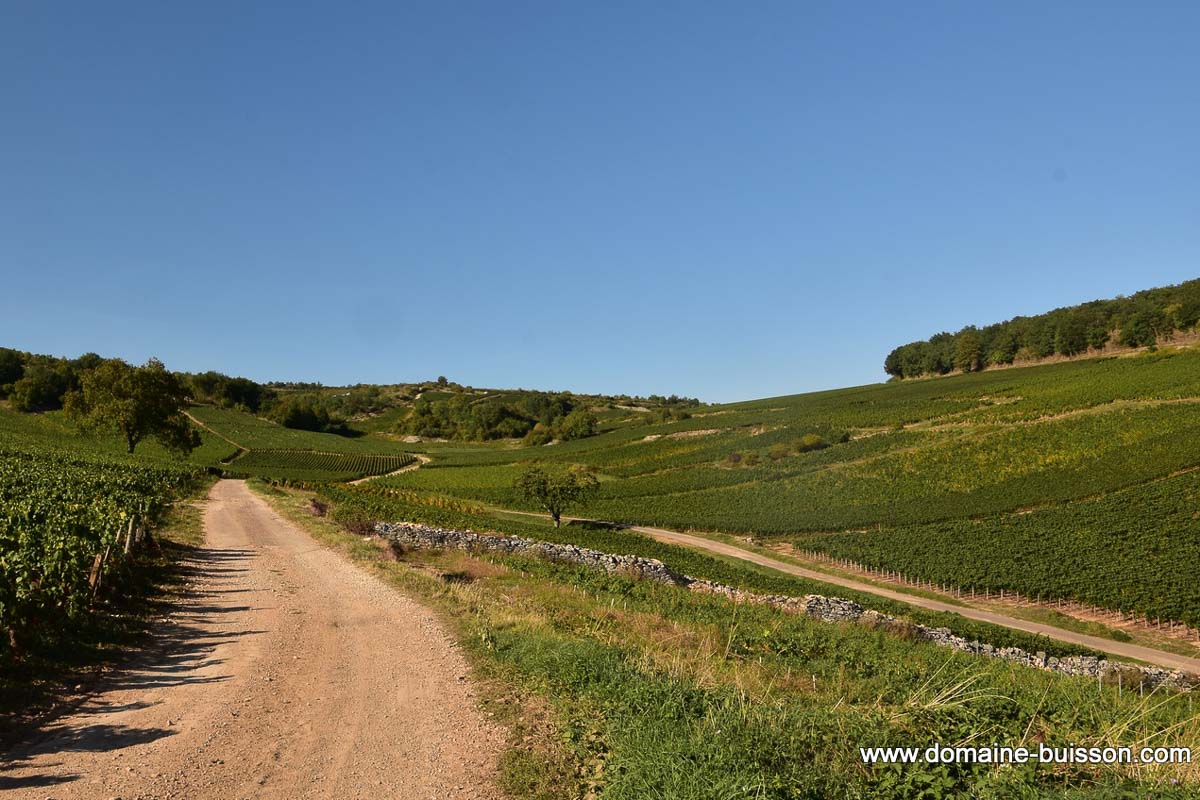
Treatment
Managing vine treatments is a crucial step in ensuring the health and productivity of the vines while respecting the environment. At Domaine Henri & Gilles Buisson, Franck and Frédérick Buisson adopt an entirely organic and biodynamic approach, emphasising practices that respect nature and the vines.
Domaine Henri & Gilles Buisson uses only organic or biodynamic treatments to protect its vines. These methods exclude the use of synthetic chemicals, favouring natural and sustainable solutions. Biodynamic treatments go beyond organic practices by incorporating elements of sustainable agriculture and natural cycles, helping to maintain a harmonious balance in the vineyard.
Frédérick Buisson actively works on the natural immunity of plants by making plant-based decoctions. These preparations strengthen the vines' resistance to disease and parasites, reducing the need for external treatments. Using plants such as nettle, comfrey and horsetail, he creates natural solutions that are both effective and environmentally friendly.
Decoctions of nettle, comfrey and horsetail are key elements in the management of vineyard treatments on the estate. Nettle is known for its stimulating and strengthening properties, comfrey for its healing and regenerating effects, and horsetail for its high silica content, which fortifies plant tissue. Frédérick makes these decoctions himself, ensuring their quality and effectiveness (except for the horsetail).
Every year, Frédérick Buisson carries out a detailed analysis of the soil in his vineyards. These analyses enable him to assess the condition of the soil and detect any deficiencies. Based on the results, he adjusts his treatments and growing practices to optimise the health of the vines and the quality of the grapes. This scientific and proactive approach ensures that the vines receive the nutrients they need while minimising the environmental impact.
Franck and Frédérick Buisson's commitment to sustainable viticultural practices is reflected in their ecosystem-friendly management of vine treatments. Their eco-responsible approach reflects a deep understanding and respect for nature, ensuring the production of authentic, high-quality wines.
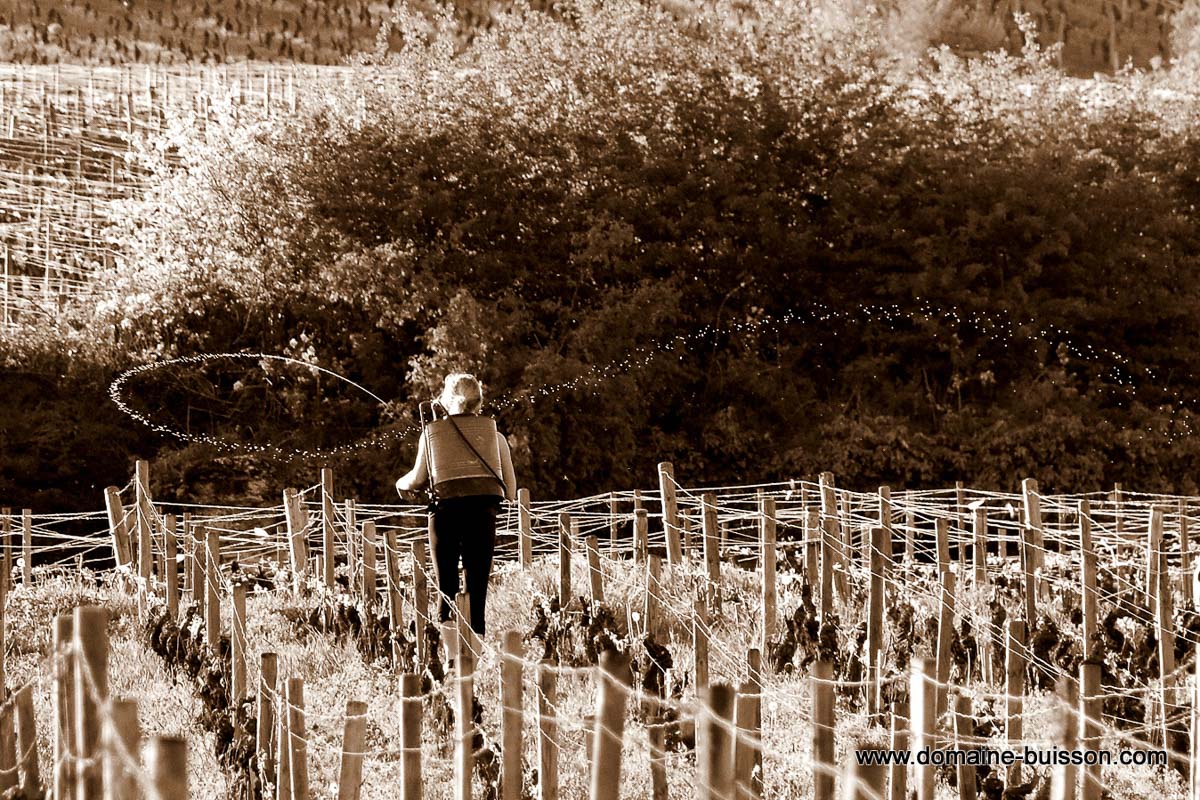
-
Method of vinification
For white wines
The vinification of white wines at Domaine Henri & Gilles Buisson is a meticulous process that combines tradition and innovation to produce high-quality wines. Franck and Frédérick Buisson apply methods that respect nature and the grapes, guaranteeing wines that faithfully reflect their Burgundy terroir.
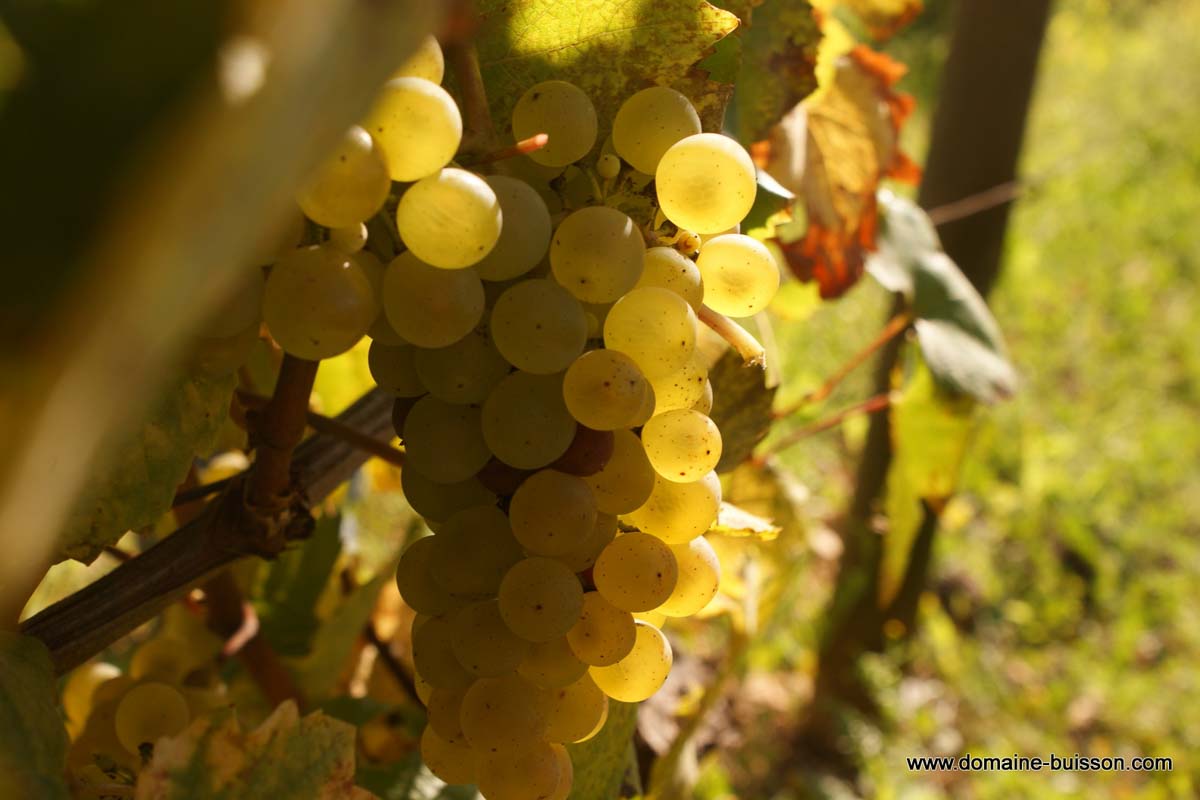
Chardonnay grapes for white wines are harvested by hand, a method that preserves the integrity of the berries. The bunches are placed in 20 kg crates to limit settling and prevent the fruit from being crushed. Once harvested, the grapes are transported to the estate where they undergo a meticulous manual sorting. This drastic sorting eliminates any damaged berries and retains only the best, thus ensuring the optimum quality of the final wine.
The bunches are then crushed to burst the skin of the berries, increasing the quantity of juice extracted and releasing more polyphenols, adding more substance to the wine by producing more buds. The grapes are pressed in a pneumatic press at a pressure of 1.8 bar, a gentle method that extracts the juice without removing the stalks. The juice obtained is then left to settle for 24 hours. This process separates the solid particles from the juice, ensuring a clean base for fermentation.
After settling, the juice is transferred to barrels without any addition of sulphur or enzymes, allowing fermentation to start naturally. Frédérick Buisson uses a variety of containers for vinification and ageing, including 228, 350 and 500-litre casks, as well as a few concrete eggs and foudres. This diversification of containers helps to homogenise the wines and avoid ‘typifying’ them, while preserving the purity and complexity of the aromas. Approximately 10-15% of the barrels are new.
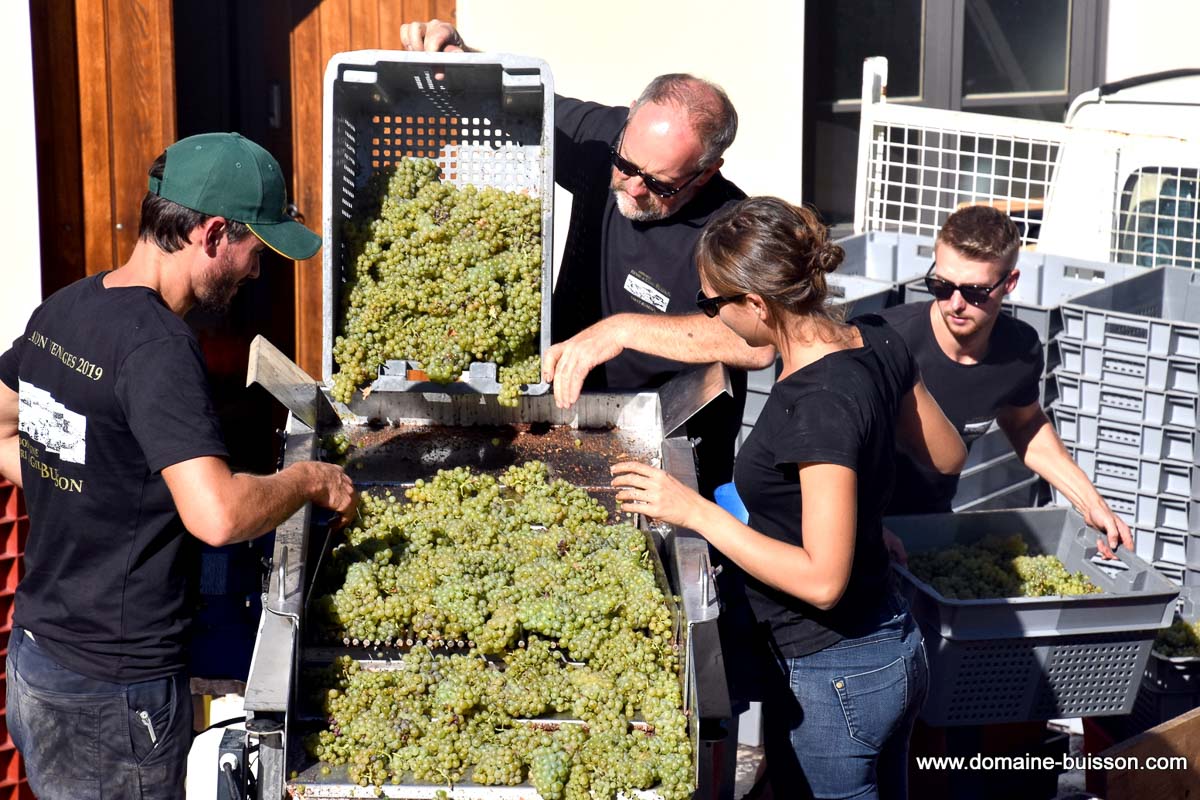
The ageing period lasts 12 months, during which the wine develops its structure and aromas. The different barrels are then blended to create a harmonious wine. At the end of the ageing process, Frédérick adds a small amount of SO2, the bare minimum needed to ensure the wine's stability and longevity. If necessary, the wines can be fined and/or filtered, but this depends on the characteristics of the vintage.
The white wines are bottled during the winter, a time chosen to guarantee optimum storage conditions. This final stage is the culmination of a rigorous winemaking process that respects nature and the grapes, producing exceptional white wines that reflect the richness and diversity of the Burgundy terroir.
For reds
The vinification of red wines at Domaine Henri & Gilles Buisson is a work of precision and passion. Franck and Frédérick Buisson combine traditional know-how with modern techniques to produce exceptional red wines that are faithful to the Saint-Romain terroir.
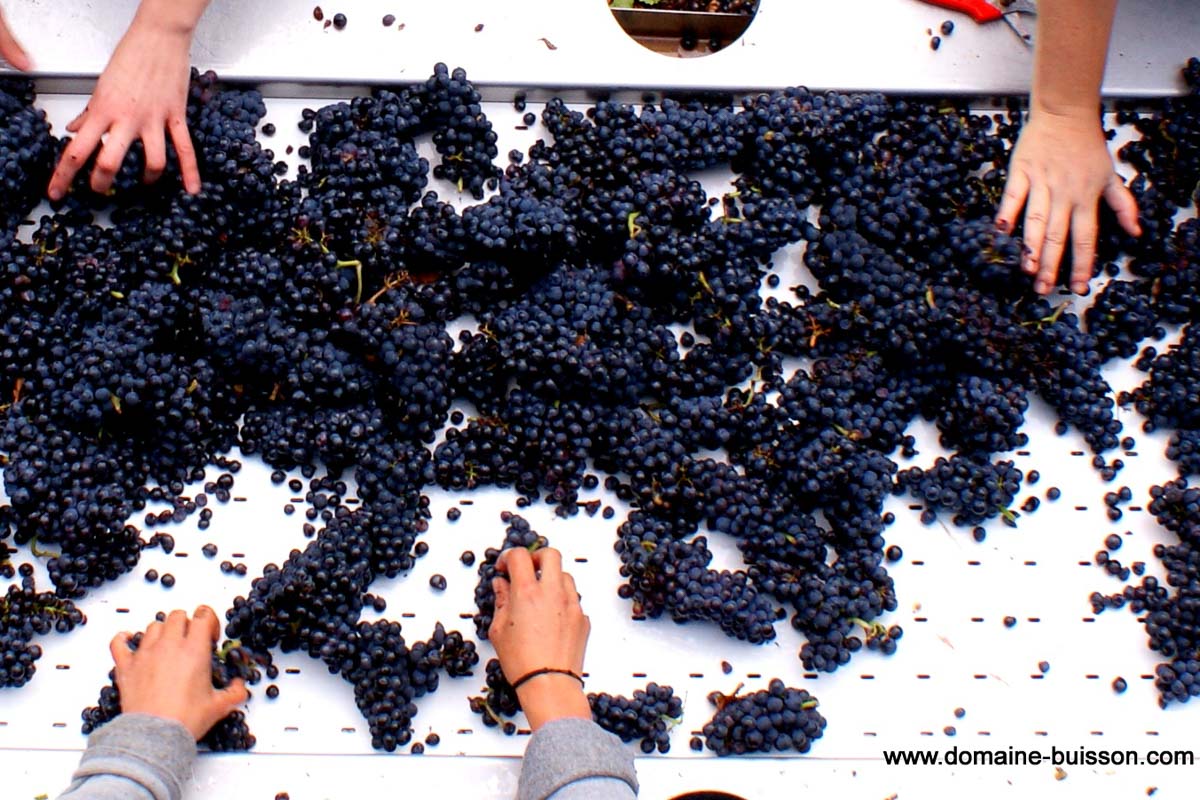
The grapes are harvested by hand, carefully placed in 20 kg crates to avoid settling and preserve the integrity of the berries. Once harvested, the grapes are transported to the estate, where they undergo a rigorous manual sorting process. This meticulous sorting removes any damaged berries and selects only the best fruit for vinification.
The grapes are partially destemmed, with between 20% and 60% of the harvest left whole, depending on the characteristics of the vintage. The warmer the vintage, the higher the proportion of whole grapes. The grapes are then left to macerate for 10 to 15 days, with some punching down of the cap and daily pumping over. The aim is to extract just enough to achieve the balance Frédérick is aiming for, without over-extraction.
After maceration, the wine is transferred to 228-litre barrels for fermentation. Frédérick Buisson has determined that this barrel size offers the best balance between contact with the wood, oxygen and lees. The ageing period lasts 12 months, allowing the wines to develop their structure and aromas. During this period, the wines are closely monitored. The different casks are then blended to create a perfect harmony. Around 10-15% new barrels are used.
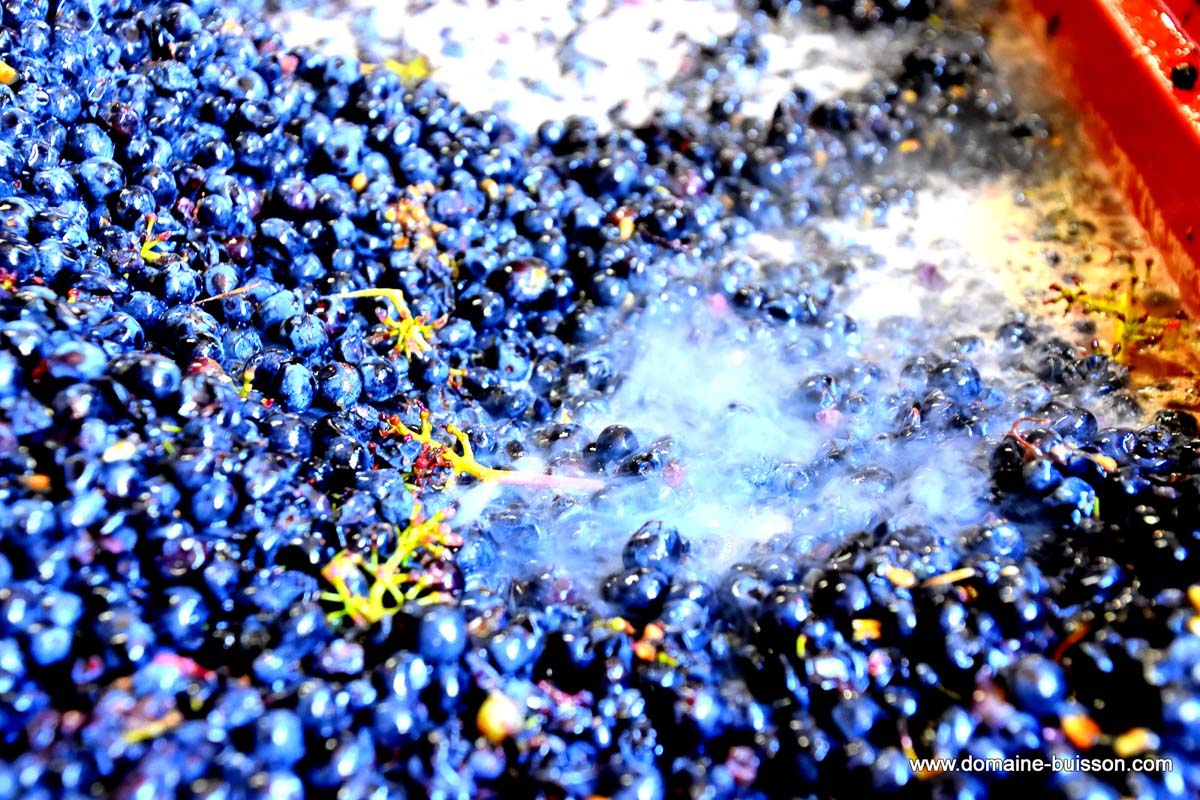
At the end of the ageing process, a small amount of SO2 is added, the strict minimum needed to guarantee the stability and longevity of the wines. This practice ensures that the wines remain clean and age well over time. If necessary, the wines may be fined and/or filtered, although this depends on the vintage and the specific characteristics of each cuvée.
The red wines are bottled during the winter, under optimum conditions to preserve the quality of the wine. This stage marks the culmination of a rigorous winemaking process that respects tradition and the environment.
DISCOVER THE WINES OF DOMAINE HENRI & GILLES BUISSON
-
The vines of Domaine Henri & Gilles Buisson
White wines
Burgundy ‘Aligoté
Parcel: Unlike the majority of estates that grow their Aligoté on the plains, the domaine's Aligoté plot is located on the heights of Saint-Romain, at an altitude of 410 metres.
Soil type: Marne de Saint Romain
Average age of vines: 40 years
Wine type : The only wine from the estate to be aged for 18 months. The aim is to extract as much substance as possible. The wine is round and easy to drink. It has a good body and length on the palate.
Saint-Romain ‘Le Jarron
Parcel: This parcel of Saint-Romain faces south-west and is situated at an altitude of between 293 and 380 metres on a steep slope. The soil is light and sandy and lies on crumbling limestone scree.
Soil type: Colluviosol on Marne de Pommard
Average age of vines: 15 years
Wine type : This terroir, where young vines thrive, produces a fresh, fruity and aromatic white wine. Its delicate minerality adds a pleasant roundness, accentuated by notes of citrus fruit and white flowers.
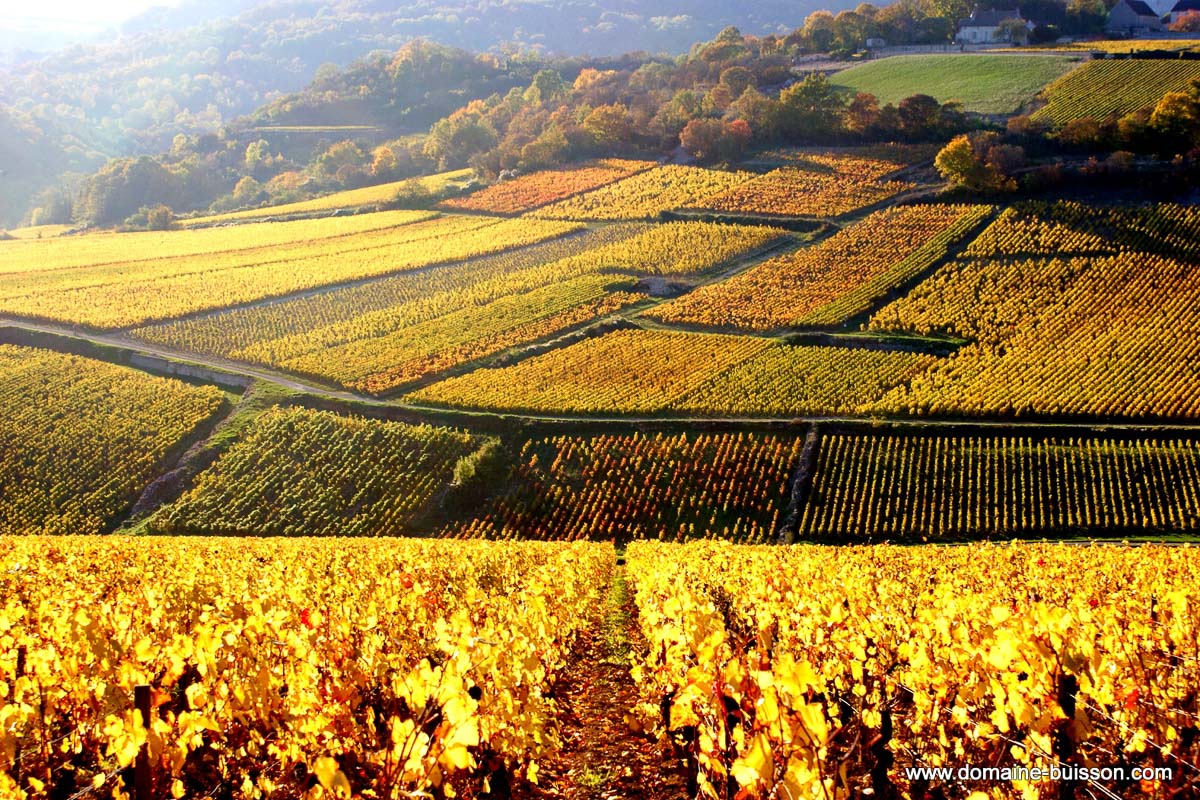
Saint-Romain “La Perrière
Parcel: These 40-year-old, east-facing vines thrive at an altitude of between 303 and 340 meters on a hillside facing the Saint-Romain valley. Their main characteristic is the marked presence of limestone, as suggested by the climate's name.
Soil type: Colluviosol on limestone
Average age of vines: 40 years
Wine character : Minerality is at the heart of this invigorating white wine, evoking the scents of a torrent or undergrowth after rain. Its freshness, elegance and aromas of white flowers and wet stone charm from the very first years. After five to seven years of aging, this Saint-Romain will develop delicious aromas of grilled almonds and gunflint.
Saint-Romain “En Poillange
Parcel: The “Poillange” terroir lies on a gentle slope, benefiting from excellent soils. These 60-year-old, south-east-facing vines thrive coolly between 353 and 380 meters altitude, on a hillside facing the Saint-Romain valley. This marly limestone environment, enriched with clay layers, is ideal for the Chardonnay grape.
Soil type: Colluviosol on Marne de Saint-Romain
Average age of vines: 60 years
Wine typicity: This appellation is driven by freshness and elegance, with irresistible elderflower aromas and minerality. Its mellow, saline texture is exquisite on the palate, offering remarkable persistence.
Saint-Romain “Sous le Chateau
Parcel: South/South-East facing, this parcel, located 370 meters above sea level beneath the ruins of an ancient château, benefits from generous exposure to the sun's rays. The vines thrive as their roots sink into shallow soil on hard limestone, exploiting the faults to draw in the necessary nutrients.
Soil type: Colluviosol on limestone
Average age of vines: 30 years
Wine character :This Saint-Romain “Sous Le Château” embodies a subtle harmony between the sunny ripeness of its climate and the rusticity of its soil. The result is a powerful, structured wine, rich in substance. On the palate, it reveals warm apricot and peach flavors, accompanied by spicy and mineral notes. With 8-10 years' patience, it will develop delicious white truffle aromas.
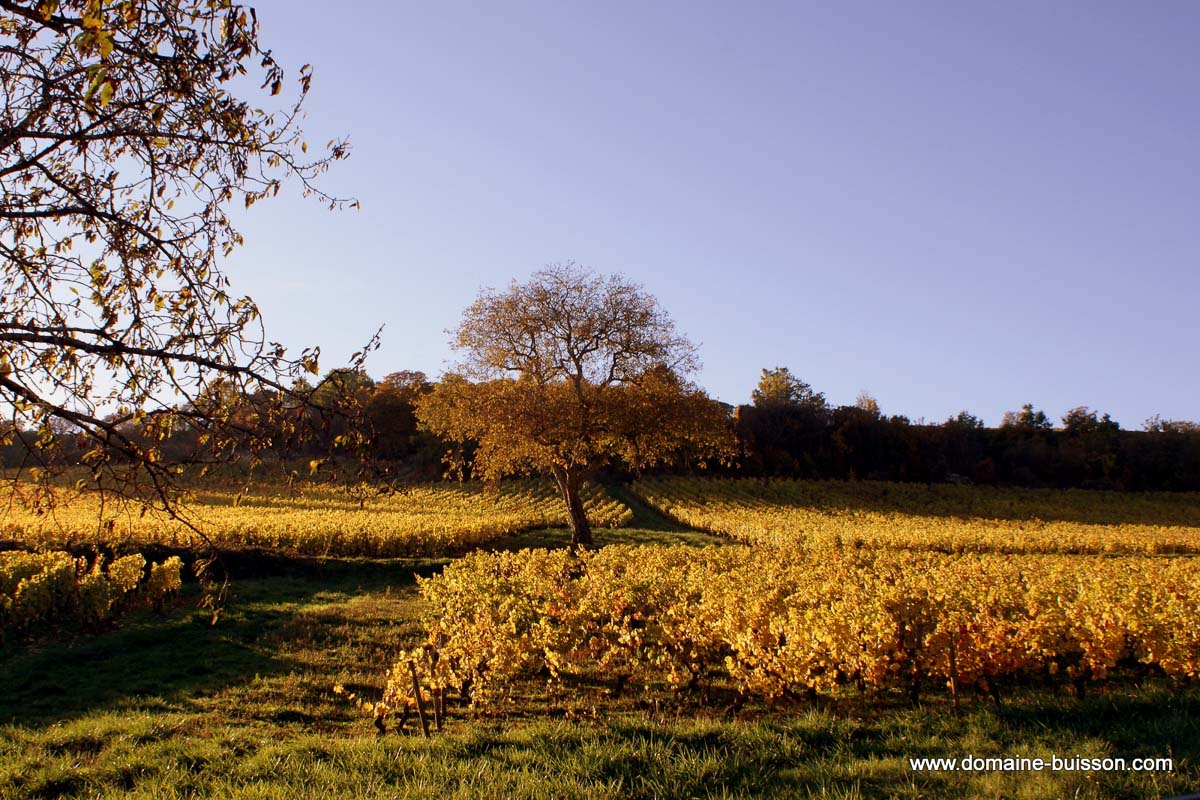
Saint-Romain « Sous la Velle »
Parcel: This parcel, called “Sous La Velle”, is precisely located below the village of Saint-Romain le haut, at an altitude of 370 meters on the hillside. It extends over 2.5 hectares in the heart of the valley. 60 years old, these emblematic vines have greatly contributed to the appellation's renown. They are planted on scree slopes of Saint-Romain marl, where the roots tap into the limestone, giving the wine a beautiful minerality.
Soil type: Colluviosol on Marne de Saint-Romain
Average age of vines: 60 years
Wine character : The vines are deeply rooted in limestone, giving the wine a superb minerality. The attack is frank, revealing notes of preserved lemon. Remarkably dense and richer than its peers, this wine reveals complex, varied aromas. It then unfolds on a delicate touch of salt and iodine, offering a perfect alliance between minerality and explosive fruitiness.
Saint-Romain « Sous la Velle - Absolu »
Parcel: Identical to “Sous la Velle”. Named “Absolu” because it was vinified and bottled without added sulfur.
Wine character : The absence of added sulfur gives this wine an incredibly aromatic nose, highlighting the specific characteristics of the Chardonnay grape, with rich nuances of yellow-fleshed fruit and preserved lemons. On the palate, it is generously enveloping. The wine's structure is remarkable and dynamic, with a saline, iodized finish typical of the estate's terroirs. It is generally recommended to store wines at a temperature below 14°C, and this advice applies particularly to this sulfite-free cuvée.
Meursault « Les Vignes de Marguerite »
Plot: To honor their grandmother, Marguerite Buisson, who brought some Meursault vines as a dowry, this cuvée takes her name. It's a blend of the neighboring parcels of “Chevalières” and “Luchets”. These vines, established at an altitude of 280 meters on relatively cool soil, have remained unchanged for over a century.
Soil type: Clay-limestone
Average age of vines: 70 years
Wine typicity : This white wine reveals remarkable balance, combining elegant tension, lively structure and a supple texture with a slight fatness. With its aromas of hazelnut, saline and toasted nuances, it possesses the finesse characteristic of wines that can age for another 12 to 15 years.
Corton « Le Charlemagne » Grand Cru
Parcel: This Grand Cru, perched at 380 meters at the top of the Corton hill and facing west, reveals all the richness of its terroir. Planted on the edge of the forest on clay-limestone marl, this 75-year-old vineyard takes advantage of a cool climate and shallow, poor, very stony soil to produce an exceptional white Burgundy wine.
Soil type: Clay-limestone
Average age of vines: 75 years
Wine characteristics : Charlemagne's eye-catching golden hue captivates and surprises from the very first sip. On the palate, it reveals remarkable intensity, solid structure and well-defined texture, while fully expressing its gourmand, round and intoxicating character. The result of a harmonious balance between power, density and freshness, this Corton-Charlemagne is bewitching. After 5 to 10 years in the cellar, it reaches its peak, revealing exquisite aromas of candied lemon, honey and toasted almonds, enhanced by subtle mineral accents.
Red Wines
Bourgogne Pinot Noir
Plot: Located on the heights of Saint-Romain, at an altitude of 420 metres.
Soil type: Clay-limestone. Poor soil
Average age of vines: 40 years
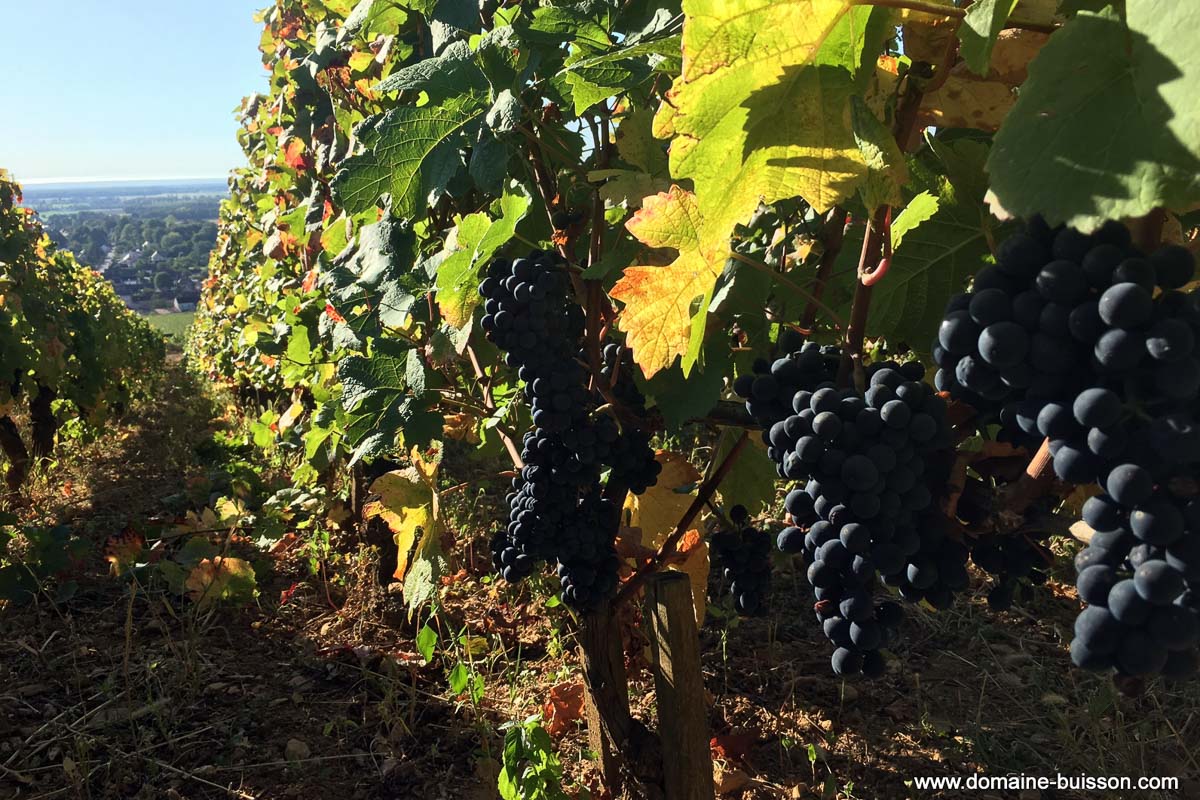
Saint-Romain « Combe Bazin »
Parcel: Facing south-west, this parcel of the estate, with its 30-year-old vines, is perched at the top of the combe at an altitude of 360 metres. The Saint-Romain marl, brown clay soils and altitude give these young vines a remarkable balance between minerality and roundness, offering fruity exuberance and great finesse. These ideal conditions allow the vines to express their full potential, creating wines of exceptional quality.
Soil type: Calcosol on Saint-Romain marl
Average age of vines: 30 years
Wine character : This appellation embodies a perfect balance between minerality and roundness, with fruity exuberance and remarkable finesse. Very expressive on the nose, it immediately seduces with its aromas of cranberries and tart red berries. This crisp, charming Pinot offers great depth and instant pleasure on the palate, making every tasting a memorable experience.
Saint-Romain « Sous Roche »
Plot: Saint-Romain Sous Roche takes its name from its limestone terroir. Its 60-year-old plots, covering 3 hectares, are rooted in the Saint-Romain marls. Situated at an altitude of 300 meters on the hillside opposite the village, this vineyard benefits from warm currents that caress the valley. This position gives Saint-Romain Sous Roche a fresh, high-altitude Pinot character, with generous red fruit aromas. Old vines add depth and length on the palate.
Soil type: Calcosol on Saint-Romain marl
Average age of vines: 60 years
Wine typicity : Saint-Romain Sous Roche is a fresh, high-altitude Pinot with generous red fruit aromas. Old vines give this wine depth and length on the palate. When young, Sous Roche reveals all its freshness. After four or five years, it is enriched by spicy notes and ripe fruit, revealing its full complexity and potential.

Saint-Romain « Sous Roche - Absolu »
Parcel: This cuvée from the “Sous Roche” parcel is called “Absolu” because it was vinified and bottled without added sulfur.
Wine characteristics: The absence of sulfur gives this Pinot Noir an exceptionally aromatic nose, highlighting notes of ripe fruit and spices. On the palate, this wine is full-bodied and deep, with a superb, fresh wine structure typical of the estate's terroirs. To preserve all its qualities, we recommend cellaring it at a temperature below 14°, a particularly pertinent recommendation for this sulfur-free cuvée.
Beaune « Les Associés »
Parcel: With its brown soil composed of limestone and deep alluvium, this fertile terroir at an altitude of 220-350 meters nurtures 30-year-old vines. The result is an open, cheerful wine that reflects the spirit of Beaune, the capital of Burgundy wines.
Soil type: Clay-limestone
Average age of vines: 30 years
Wine character : This Beaune is distinguished by its floral notes on the nose and complex spicy aromas on the palate. Its minerality and elegant tannins give it great potential for development over the next five years.
Auxey-Duresses « Les Ecussaux » 1er cru
Parcel: Located on south-facing slopes of clay-limestone soil, the 1er cru “Les Ecusseaux” produces a supple, fleshy wine. This parcel borders the villages of Monthelie and Meursault.
Soil type: Colluviosol over Marne
Average age of vines: 30 years
Wine character : This supple, fleshy wine is distinguished by its aromas of raspberry, redcurrant and black cherry. Its velvety structure is accompanied by a delicately spicy finish.
Pommard « Les Noizons »
Parcel: Situated at an altitude of 310 metres in the middle of the hillside, this 30-year-old vineyard overlooks the Premier Crus of Pommard. Facing south on the Beaune side, this terroir is one of the most attractive in the appellation.
Soil type: Clay-limestone
Average age of vines: 30 years
Wine character : The quintessence of Pinot Noir, this wine embodies the perfect balance between power and elegance. Full-bodied and flavorful, with spicy notes, this village offers remarkable depth. Although Pommard is renowned for its ageing wines, “Les Petits Noizons” will also seduce the palate in its youth.
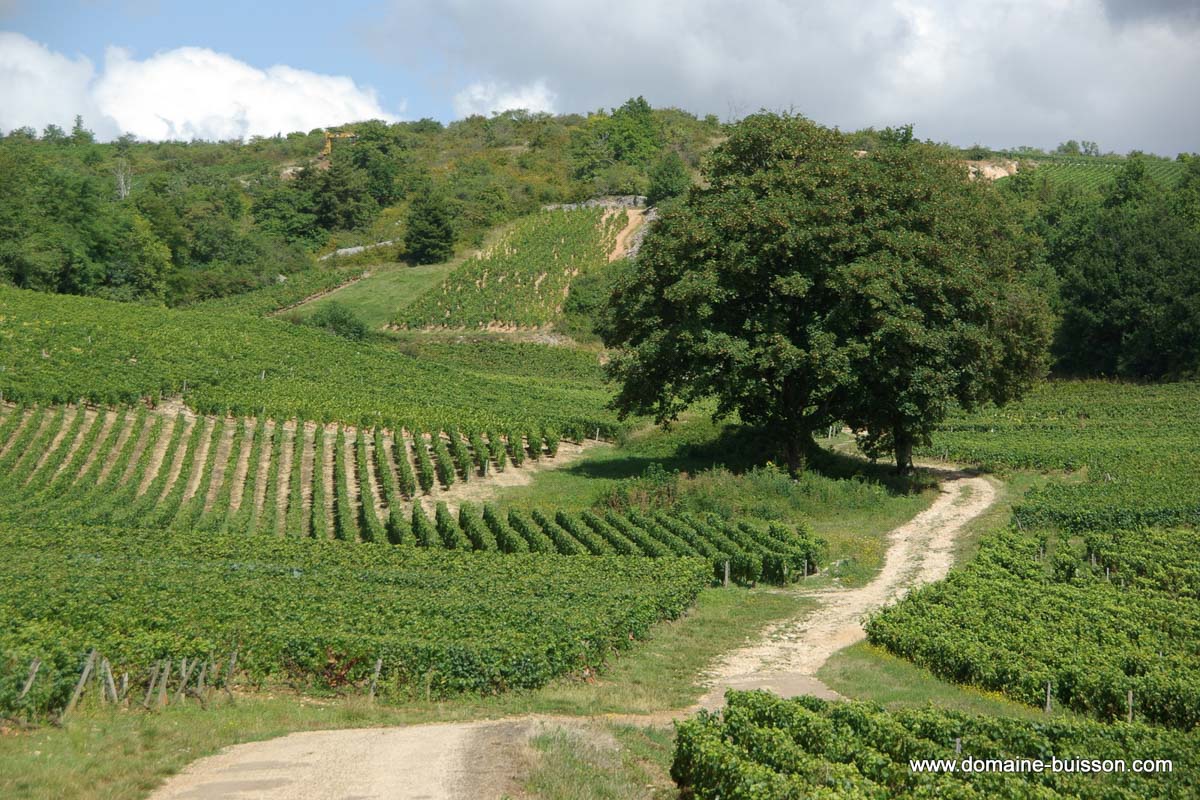
Volnay « Les Chanlins » 1er cru
Parcel: The domaine's parcel, planted with 40-year-old vines and situated at an altitude of 300 meters among the Premiers Crus, is in the most “virile” part of the appellation. Close to Pommard, it benefits from a similar soil, rich in iron oxide, as well as Volnay's own bedrock. This unique terroir gives rise to wines that combine the elegance and delicacy of Volnay on the palate, then reveal the power and persistence characteristic of Pommard.
Soil type: Marne de Volnay
Average age of vines: 40 years
Wine character : The intense nose reveals aromas of raspberry, flowers and toast. Tasty on the palate, with spicy cinnamon notes. To be enjoyed now or rediscovered later, its freshness allows it to age up to 12 years.
Corton « Le Rognet et Corton » Grand Cru
Parcel: Nestled 270 meters above sea level on the hillside of Corton, this parcel faces the rising sun. The 70-year-old vines are rooted in poor limestone soil, with light, well-draining earth. This demanding climate and terroir push the vines to give their very best, producing a wine of real presence and intensity, while retaining finesse and elegance.
Soil type: Argovian clay-limestone, grey limestone
Average age of vines: 70 years
Wine character : A wine with a strong presence and remarkable intensity, while maintaining finesse and elegance. When young, Rognet-et-Corton reveals aromas of spicy fruit, blackcurrant and kirsch. With age, it develops notes of undergrowth, truffles and leather. Perfectly representing the excellence of a red Burgundy Grand Cru, it embodies the seductive Pinot Noir. This great charmer likes to be waited for, and is best enjoyed between 4 and 15 years.
Corton « Les Renardes » Grand Cru
Plot: Superbly oriented to the east and perched at 300 meters in the middle of the hillside on the hill of Corton, this 60-year-old vineyard benefits from a very clayey soil. This heavy, red, ferruginous soil gives rise to opulent, powerful wines, perfectly expressing the earthy, sometimes slightly surly character of pinot noir. This renowned climate combines the richness of the soil with the freshness of the air, producing wines with a unique, intense profile.
Soil type: Upper Oxfordian clay-limestone
Average age of vines: 60 years
Wine typicity: Corton Grand Cru Les Renardes reflects the authentic and sometimes slightly rebellious character of Pinot Noir. This prestigious climate combines the richness of the ferruginous soil with the freshness of the air, creating a subtle balance. Behind its seductive complexity, this wine offers an impressive palate, sensual and structured, accompanied by a beautiful amplitude.
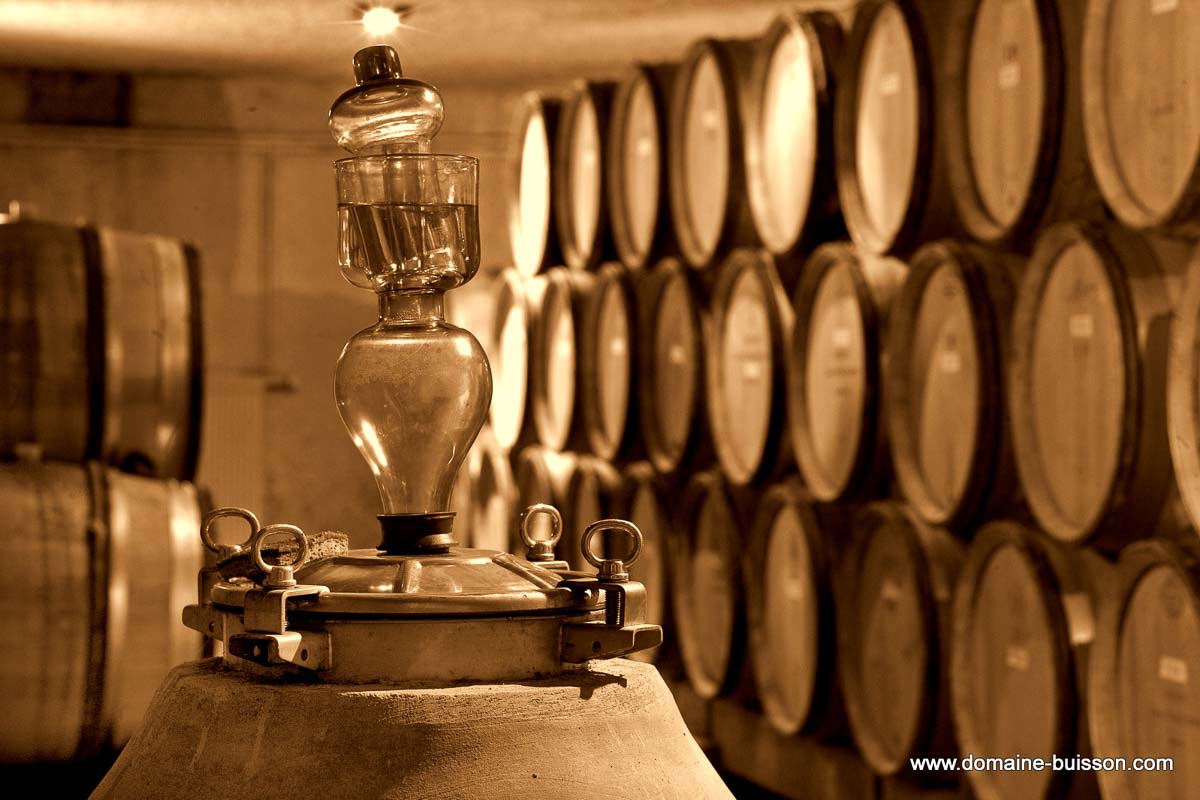
-
A word about aging wines
Wine ageing is a crucial stage in revealing the full complexity and richness of Domaine Henri & Gilles Buisson cuvées. With their know-how and passion, they have put in place rigorous practices to ensure that each bottle ages in optimal conditions, enabling wine lovers to appreciate all the subtlety and depth of their wines over time.
For Frédérick Buisson, aging wines is above all a matter of personal taste. The estate's wines can be enjoyed at different stages of maturation, each offering unique characteristics.
For those who prefer to enjoy their wine fresh, Frédérick recommends opening bottles between 3 and 10 years after bottling. At this stage, the wine retains all its energy, carried by bright, fresh fruit aromas. Notes of lemon blossom and cold chalk powder are present, offering an invigorating, expressive tasting experience. This tasting period highlights the wine's youthful, dynamic character, with great freshness and vivacity.
After 10 years, the estate's wines begin to develop more complex tertiary aromas, often referred to as ageing aromas. These aromas include notes of undergrowth, almond and truffle, adding further depth and complexity to the tasting experience. Of course, for these aromas to develop properly, it's essential that the bottles are stored in optimal conditions throughout this period. A stable environment, with constant temperature and controlled humidity, is crucial to ensure that the wines age gracefully.
DISCOVER THE WINES OF DOMAINE HENRI & GILLES BUISSON
The entire wvine team would like to thank Domaine Henri & Gilles Buisson for their confidence in us.
